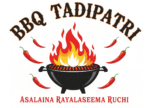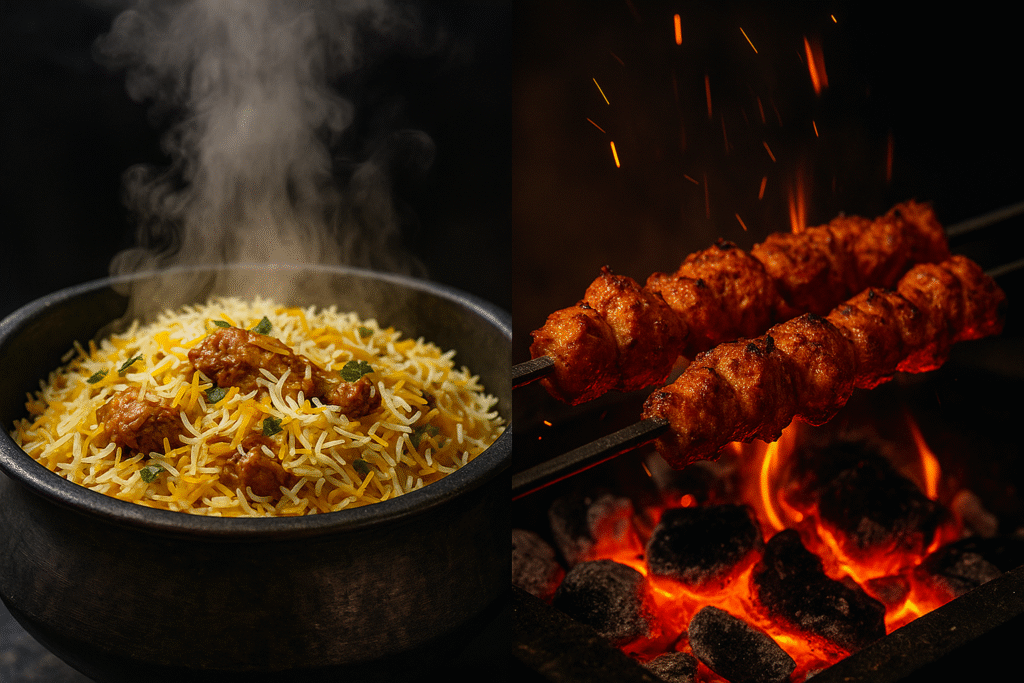The debate of Andhra biryani vs BBQ is really a debate about how heat is delivered. Both are bold and unmistakably southern. Yet the path from first bite to last swallow takes very different turns, and those turns determine which one feels spicier to you.
In Rayalaseema, we treat fire like an ingredient, not just a cooking method. In Andhra kitchens, steam is the carrier of flavour, coaxing spice into every grain. The same chillies, the same garlic, and the same oil behave differently when they meet smoke or meet sealed pots. That difference is the heart of this comparison—and it’s what we work with every night at bbq tadipatri in Hyderabad.
Andhra biryani vs BBQ: What “spicy” really means
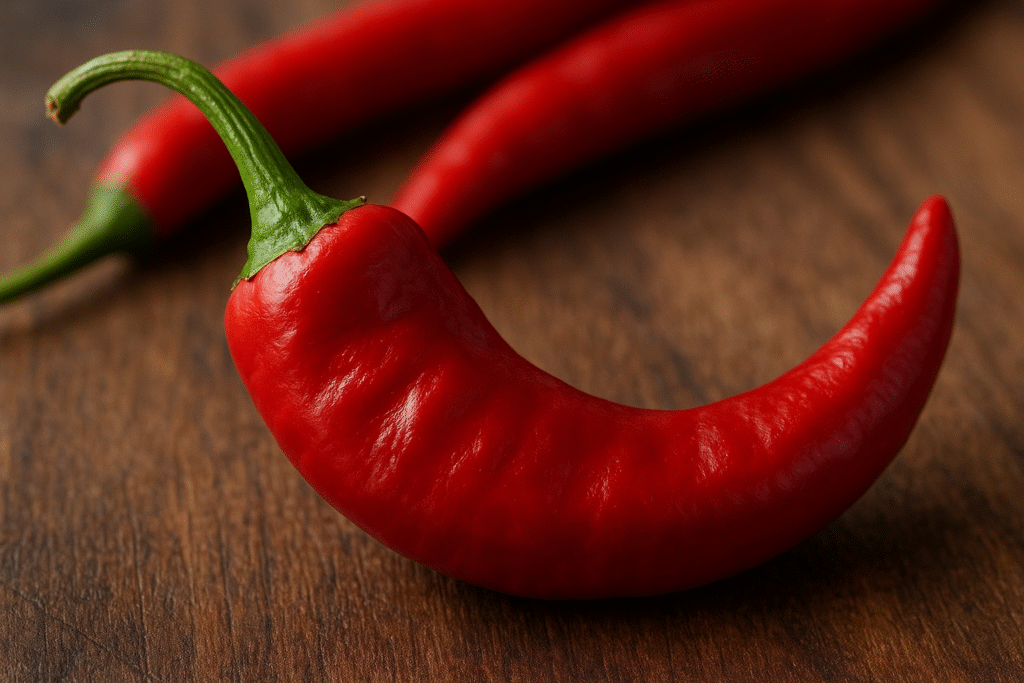
“Spicy” can mean sharp, instant heat that tingles the lips. It can also mean a slow, growing warmth that keeps building. Andhra biryani vs BBQ splits along that line. BBQ sends a fast shock to the senses. Biryani sends a steady wave that keeps returning. Neither approach is better by default. The question is how you like your spice to arrive. Do you want it to announce itself in a seared crust, or surround you in fragrant rice?
Andhra biryani vs BBQ: Where the heat starts
In biryani, the heat begins in the masala and ends in the steam. Green and red chillies mingle with ginger-garlic, whole spices, and fried onions. When the pot goes on dum, spiced oils travel through the rice. The chemistry is gentle and thorough, so every spoon carries a measured hit.
In BBQ, the heat begins in the karam and meets a live flame. Sun-dried chillies, garlic, coriander, pepper, and rock salt grip the meat’s surface. The sear concentrates flavour, and the embers perfume it with wood smoke. The first bite lands hard because the spice sits right where your tongue meets the crust.
Andhra biryani vs BBQ: Bite-for-bite vs plate-for-plate heat
If you compare one bite of biryani and one bite of Rayalaseema mutton chops, the BBQ often feels fiercer. The edges are charred, the oils are fresh, and the chilli is waiting at the surface. Your lips get involved immediately.
If you compare the full plate, the balance can flip. Heat in biryani accumulates because every grain is seasoned. The experience becomes a climb, not a spike. You don’t always notice the exact moment you pass your limit; you just feel the warmth grow with each spoonful.
Fat, acid, and starch: who calms heat better
Fat and acid decide how long heat lingers. Ghee and birista in biryani hold on to chilli oils, then spread them across your palate—smooth, persistent warmth. Lemon and raita interrupt the cycle, but only for a moment before the next spoon returns you to the climb.
On the grill, meat juices and resting time temper the burn between bites. A squeeze of citrus clears the palate without muting smoke. When you pair the grill with ragi sangati or jonna rotte, the starch adds a calm backbone. The heat returns when you chase the crust again. It becomes a rhythm—fire, relief, fire.
Texture and aroma change perception
Texture makes spice louder or softer. Biryani is plush and moist, so heat feels round. BBQ is crisp at the edges and juicy at the centre, so heat feels defined. Smoke also changes the message. With tamarind or mango wood, the same chilli reads more complex and a touch sweeter.
Aromatics behave differently too. In biryani, star anise, cardamom, bay leaf, and cloves create a halo around the chilli. On the grill, curry leaves flashed in hot ghee or a crackled tempering add quick, fragrant peaks. The same Scoville number speaks a different language in each dish.
Heat levels you can actually choose
Control is a form of hospitality. On the grill at bbq tadipatri, you choose Mild, Medium, or Authentic Rayalaseema heat. Mild privileges aroma over burn. Medium balances chilli with smoke. Authentic leans into the region’s signature fire, then calms it with resting and lemon.
Biryani can be tuned too, though less precisely. You can ask for fewer green chillies, a lighter masala, or extra raita. The nature of dum means the spice remains even, just at a lower baseline. For cautious diners, that evenness is comforting.
Vegetarians and pescatarians included
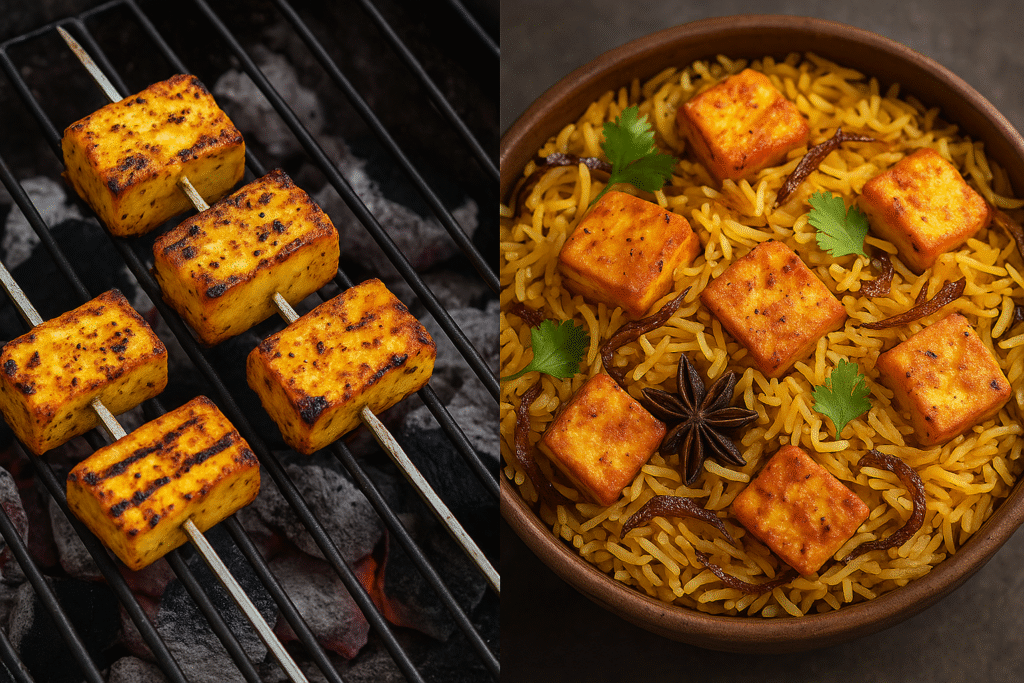
A fair comparison must include paneer and fish. Paneer on the pit drinks up karam and handles smoke gracefully; the crust forms fast, so chilli feels direct. Paneer in biryani absorbs masala gently and shares its heat with the rice, so spice feels integrated rather than forward.
Fish tells a similar story. Ember-baked whole fish tastes bright and assertive; fish biryani tastes balanced and aromatic. Protein doesn’t change the conclusion; it just gives you new textures through which to read the heat.
Pairings that shift the scale
Pairings can tilt the decision. Raita, lemon, and onions support biryani and keep the warmth civil. Buttermilk, ragi sangati, and jonna rotte steer BBQ toward stamina rather than fatigue. Add gongura pachadi or a roasted garlic–chilli relish to the grill and the heat becomes layered rather than blunt. If you’re sensitive to spice, this is liberating: you build how heat appears on your plate, one small choice at a time.
What beginners should order
Newcomers often confuse intensity with pain. The goal is flavour, not bravery. For a first visit, start with Medium-heat wings or country chicken to learn the grill’s voice. A light-chilli chicken biryani shows how steam makes warmth gentle and dependable. If that goes well, dial BBQ up to Authentic on your next round. If you want more lift in biryani, ask for a green-chilli tadka on the side. Move in smooth steps; no cliff jumps required.
What fire lovers really want
Some diners chase the high of capsaicin. The clever move is sequencing. Start with BBQ to light the spark. Follow with biryani to keep it glowing. End with buttermilk and lemon to land softly. You experience different shapes of heat in a single sitting without losing control.
Nutrition and satisfaction
Spice is only one axis of enjoyment. Protein, fibre, and fat influence satisfaction. BBQ offers concentrated protein with modest carbs—especially with ragi sangati or jonna rotte instead of refined breads. Biryani offers a balanced bowl with starch, fat, and meat fused together, which explains its deep comfort. Neither is inherently heavier; sides and portions decide.
Kids and family-friendly choices
Families need predictability. Mild BBQ with lemon and curd is approachable for children who like grilled flavours. Light-chilli biryani with extra raita works for kids who prefer softer textures. A table can be adventurous and comfortable at once if you set the ladders right.
The restaurant experience matters
Service changes spice as much as salt does. A good team checks in after your first bite, suggests a squeeze of citrus, and nudges you toward a better pairing. In our dining room, Andhra biryani and Rayalaseema BBQ aren’t a rigid either/or. They’re a conversation shaped by your comfort and curiosity. We keep the wood honest, the chillies fresh, and the resting ritual sacred—so you leave warm and satisfied, not scorched and exhausted.
A simple at-home trial
Try the experiment at home. Reheat biryani gently so the rice stays fragrant and moist. Warm BBQ over low heat so the crust revives without drying. Take one bite of each and pause. Notice where the heat lands first and where it lingers. Notice how water changes the afterburn compared to buttermilk. Five mindful bites teach more than a hundred comments online.
The role of millets in balancing heat
Millets aren’t an afterthought in Rayalaseema. Ragi sangati and jonna rotte add fibre, minerals, and a steadier rise of energy. When the main event is hot—biryani or BBQ—millets make the plate feel complete. The contrast of nutty starch and vivid spice keeps you reaching for the next bite without tiring out.
Common myths, gently corrected
“Biryani is never as hot as grills.” True only for the first minute. Over time, even seasoning can outpace your expectations. “BBQ can’t be subtle.” Mild and Medium rubs bring a garden of aromas, especially when curry leaves meet ghee on a hot plate. Drop the myths, get your taste buds back.
A guide to ordering with confidence
Confidence tastes like a plate that suits you. If you’re cautious, begin with Medium BBQ and a squeeze of lemon; pair with ragi sangati and curd on the side. If you’re curious, order a regular Andhra chicken biryani with an extra wedge of lemon and raita. If you love fire, say the word and we’ll serve Authentic Rayalaseema rub—or add a green-chilli tadka to your biryani. The kitchen is a tool you get to use.
The verdict that respects your palate
If the question demands a single answer, here it is. Bite for bite, BBQ usually feels spicier. Plate for plate, biryani often finishes spicier because warmth accumulates. The winner is the dish that lets you enjoy the most flavour at your chosen level of heat.
Your next step at bbq tadipatri
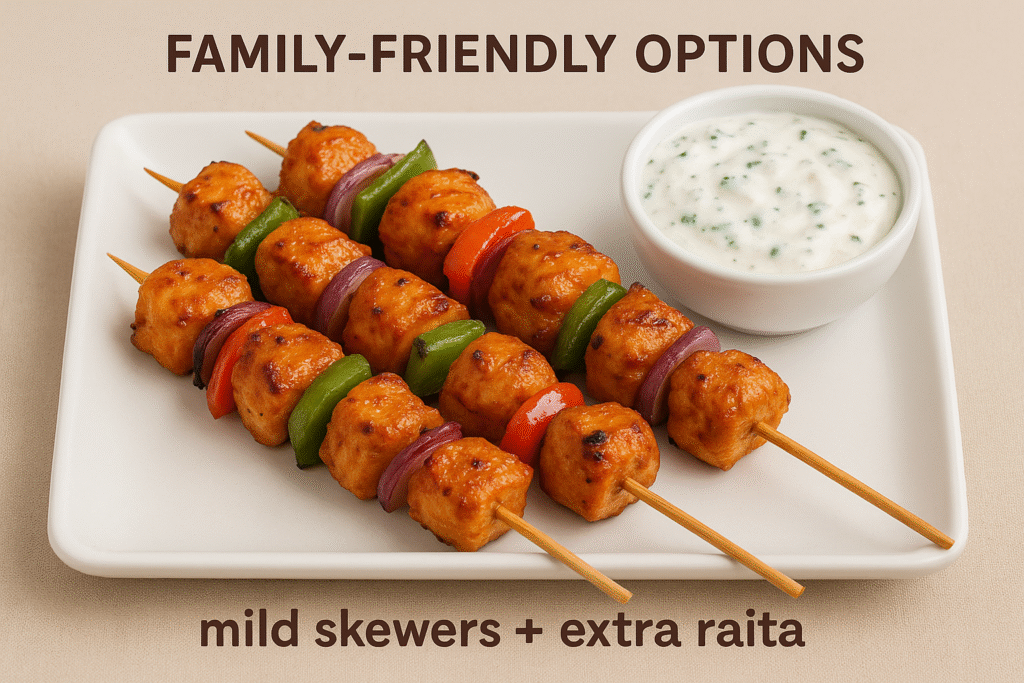
Settle Andhra biryani vs BBQ side by side. Start with Medium-heat mutton chops to hear the grill’s voice. Follow with a classic Andhra chicken biryani to feel the steady climb. Sip buttermilk, squeeze lemon, and notice the spaces between bites—where comfort lives. Tell us your spice comfort in plain words; we’ll tune the rubs, adjust the oils, and guide the pairings. Your perfect level isn’t a number—it’s the smile that lasts from first bite to last grain.
